Related Research Articles

Pearl River is a hamlet and census-designated place in the town of Orangetown, Rockland County, New York, United States. It is east of Chestnut Ridge, south of Nanuet, west of Blauvelt, New York, and north of Montvale and Old Tappan, New Jersey. The population was 15,876 at the 2010 census.

I Love Lucy is an American television sitcom that originally aired on CBS from October 15, 1951, to May 6, 1957, with a total of 180 half-hour episodes spanning six seasons. The series starred Lucille Ball and her husband Desi Arnaz, along with Vivian Vance and William Frawley, and follows the life of Lucy Ricardo (Ball), a young, middle-class housewife living in New York City, who often concocts plans with her best friends and landlords, Ethel and Fred Mertz, to appear alongside her bandleader husband, Ricky Ricardo (Arnaz), in his nightclub. Lucy is depicted trying numerous schemes to mingle with and be a part of show business. After the series ended in 1957, a modified version of the show continued for three more seasons, with 13 one-hour specials, which ran from 1957 to 1960. It was first known as The Lucille Ball–Desi Arnaz Show, and later, in reruns, as The Lucy–Desi Comedy Hour.

Color television or colour television is a television transmission technology that includes color information for the picture, so the video image can be displayed in color on the television set. It improves on the monochrome or black-and-white television technology, which displays the image in shades of gray (grayscale). Television broadcasting stations and networks in most parts of the world upgraded from black-and-white to color transmission between the 1960s and the 1980s. The invention of color television standards was an important part of the history and technology of television.
The year 1972 involved some significant events in television. Below is a list of notable television-related events.
The year 1955 in television involved some significant events. Below is a list of television-related events during 1955.
The year 1953 in television involved some significant events. Below is a list of television-related events during 1953.
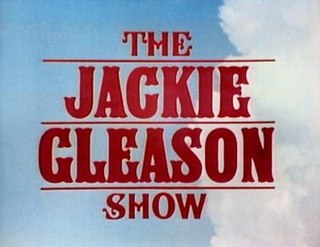
The Jackie Gleason Show is the name of a series of American network television shows that starred Jackie Gleason, which ran from 1952 to 1970, in various forms.
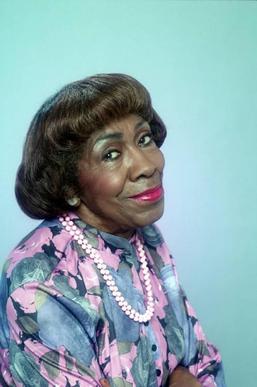
Helen Dorothy Martin was an American actress of stage and television. Martin's career spanned over 60 years, appearing first on stage and later in film and television. Martin is best known for her roles as Wanda on the CBS sitcom Good Times (1974–1979) and as Pearl Shay on the NBC sitcom 227 (1985–1990).
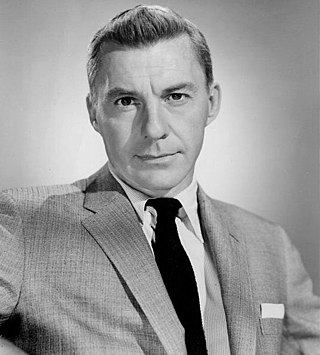
David Wayne was an American stage and screen actor with a career spanning over 50 years.

Screen Gems is an American brand name owned by Sony Pictures Entertainment, a subsidiary of Japanese multinational conglomerate, Sony Group Corporation. It has served several different purposes for its parent companies over the decades since its incorporation, initially as a cartoon studio, then a television studio, and later on as a film studio. The label currently serves as a film production that specializes in genre films, mainly horror.
NBCUniversal Syndication Studios, formerly known as NBCUniversal Television Distribution, Universal Domestic Television, Studios USA Television Distribution and MCA TV, is the television syndication division of NBCUniversal, a division of Comcast, in the United States. Its predecessors include NBC Enterprises, Universal Television Distribution, Multimedia Entertainment, PolyGram Television, and Sky Vision. At some point in its history, it was also known as "NBCUniversal Television & New Media Distribution" and "NBC Universal Television and New Media Distribution.” This unit is possibly the parent for the similarly named "NBCUniversal Domestic Television Distribution" unit.
Navy Log is an American television drama anthology series created by Samuel Gallu that presented stories from the history of the United States Navy. This series ran on CBS from September 20, 1955, until September 25, 1956. On October 17, 1956, it moved to ABC, where it aired until September 25, 1958. It changed networks because CBS "could not schedule it to the sponsor's wishes". The program aired for a total of three seasons and 104 episodes.
China Smith is a 30-minute American syndicated television adventure series starring Dan Duryea. It is set in Singapore. It was released in the fall of 1952. The program's alternate title was The Affairs of China Smith, and the last 26 episodes were syndicated with the title The New Adventures of China Smith.

The Colgate Comedy Hour is an American comedy-musical variety series that aired live on the NBC network from 1950 to 1955. The show featured many notable comedians and entertainers of the era as guest stars. Many of the scripts of the series are archived at the UCLA Library in their Special Collections.
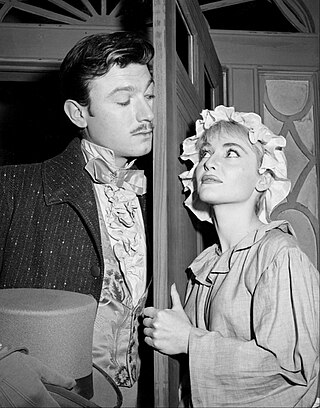
The Alcoa Hour is an American anthology television series that was aired live on NBC from October 16, 1955, to September 22, 1957.

Ford Star Jubilee is an American anthology series that originally aired monthly on Saturday nights on CBS at 9:30 P.M., E.S.T. from September 24, 1955, to November 3, 1956,. The series was approximately 90 minutes long, broadcast in black-and-white and color, and was typically telecast live. Ford Star Jubilee was sponsored by the Ford Motor Company.
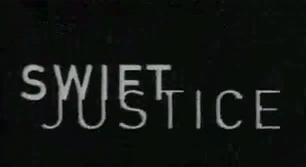
Swift Justice is an American detective drama television series created by Dick Wolf and Richard Albarino. It aired for one season on United Paramount Network (UPN) from March 13 to July 17, 1996. It follows former Navy SEAL Mac Swift, a private investigator who was fired from the New York City Police Department. He receives support from his former partner Detective Randall Patterson and his father Al Swift. Completed on a limited budget, episodes were filmed on location in New York.

A television show, TV program, or simply a TV show, is the general reference to any content produced for viewing on a television set that is traditionally broadcast via over-the-air, satellite, or cable. This includes content made by television broadcasters and content made for broadcasting by film production companies. It excludes breaking news, advertisements, or trailers that are typically placed between shows. Television shows are most often scheduled for broadcast well ahead of time and appear on electronic guides or other TV listings, but streaming services often make them available for viewing anytime. The content in a television show is produced by one of two production methodologies: live taped shows such as variety and news magazine shows shot on a television studio stage or sporting events The other production model includes animation and a variety of film productions ranging from movies to series. Shows not produced on a television studio stage are usually contracted or licensed to be made by appropriate production companies.
Captain David Grief is an American action/adventure television series that aired in syndication from October 1957 to 1960. The program was based on a series of Jack London short-stories centered on the South Seas tradesman and adventurer David Grief, collected in A Son of the Sun.
The Whistler is a 30-minute syndicated American television anthology mystery series, based on the radio series of the same name.
References
- 1 2 3 4 McNeil, Alex (1996). Total Television: the Comprehensive Guide to Programming from 1948 to the Present (4th ed.). New York, New York: Penguin Books USA, Inc. p. 607. ISBN 0-14-02-4916-8.
- ↑ Spigel, Lynn; Mann, Denise (1992). Private Screenings: Television and the Female Consumer. U of Minnesota Press. p. 270. ISBN 978-0-8166-2053-1 . Retrieved August 25, 2022.
- ↑ TV Guide. "Norby Cast and Details". TV Guide. Retrieved 2013-02-16.
- 1 2 3 4 Brooks, Tim, and Earl Marsh, The Complete Directory to Prime time Network and Cable TV Shows, 1946–Present, Ninth Edition, New York: Ballantine Books, 2007, ISBN 978-0-345-49773-4, p. 996.
- 1 2 Leszczak, Bob (November 2, 2012). Single Season Sitcoms, 1948-1979: A Complete Guide. McFarland. p. 142. ISBN 978-0-7864-6812-6 . Retrieved August 25, 2022.
- 1 2 3 Gould, Jack (January 7, 1955). "Television in Review: ' Norby' Off to Wobbly Start on N. B. C." . The New York Times. p. 27. Retrieved August 25, 2022.
- 1 2 3 "Norby" (PDF). Broadcasting. January 10, 1955. p. 12. Retrieved August 26, 2022.
- ↑ "Kodak to Relace 'Norby'" (PDF). Broadcasting. April 4, 1955. p. 52. Retrieved August 26, 2022.
- ↑ Norby (television listing), The Capital Journal (Salem, Oregon), March 9, 1955, Page 22 Accessed 4 January 2022
- ↑ Norby (television listing), Statesman Journal (Salem, Oregon), March 9, 1955, Page 16 Accessed 4 January 2022